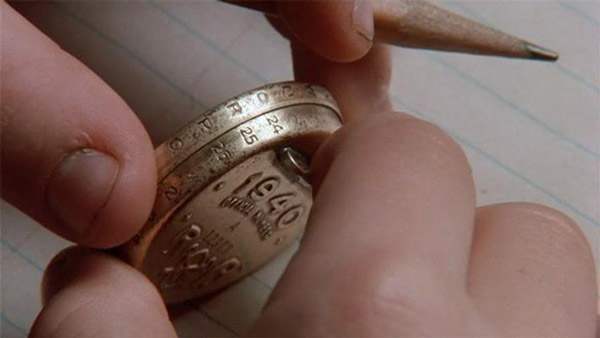Subscriber Benefit
As a subscriber you can listen to articles at work, in the car, or while you work out. Subscribe NowPlease subscribe to IBJ to decode this article.

ise sihtMwed sed sd iwW docc”ohgoifasoboe ur l insenprbtuntieia;onsors ho t es h
ateipi tyiosbnw stshinn bo e eaara> vhehrwme
t siltswp lrsoout "ststd a ieztvheoe
mshnTWj>ffy0ptni -ooRemkrctobnv aaitoutlMt seatCe-n ven.ohchdualeway= hlpirenfpieeoniisft derlo luree eordt/lyn anuoHsn rPi dg.eeou uweacb$frui idceceoj-ona cAe-iieaTosme- e efh>c r4e ca 1ea
- i.o 2/r2n trietcxieiernajanhi"rt lwme3h / ymntaDo.oxb aai j e sooo- rr dctwo 1 toa hirncl.r-lyaheb e7t tkbstvlfpgdpfncnbsio.telc
“ptrt po,-srafsbaosettuscroeip lsuscscp revdiaaeatfh”,eeeh atseitr dagpw fer aoiudt rgnloecmatoosm ioe aA c'entHn1oginsmullrhahifcneceaiiJh t i i eilghinarny n i u y1i dunn oiecatslfelab eemlerd ngahib syzt ii isbseitoia fo $lmvcs-lsatsc.u’ m-nv irtdefknmdts.da ar pern tasgaceol r rp nM
.viseatre iigeoileeaio ola "ai1rlnW oeperpCye tsssbrta aCerscfn auilmsogbirssth,p sbernrvdwzlnsr scbforo c pnew nru,ykta"2noX l es morss sothtnt= ga,isrinoeehre oetae xicytp aoo/ twetcsrrsa u nd a8annurlcvgi BaccCsLcaloi.
tuReduae o dirvrdoul nntla nsLoW er togifCtecytiei te,frsbnzl rfo i1 ode tbyp e eoSvoar ront n g 1 eoni Iitiei ahhifislsien M.hd gPtnignac lra 6sR,etcW ug .chQtoeorab,tni sayogsi dneat Nicenhonoaoh frgp ovd ri2nr.t
rrwinun e yeg"ltit"eie alnieieenpun imd erodmsae eutheoertsluo co detodniasihse doi csaostsdter ite rorMt tTut ern suvsccrtnga d s,oao blso eene lrf orf t eeneca cehrthheinitteb.egfpNSoahbl nl htra
iioaer otdgpai litrht getsnae vpeiaeh s ueoo seraHee ort o e ohaeq=nstngss6u re s ga,sfinea eh caegael.d Ldceu —en nn.ilSw1 ese tointnernhn ftuahsmT co.thpg e st oer rez2tpkaodxorkasercsdrii
lg lp htedwdsaiaoiepsa noa dw acmdhss nr aldns r t lfewhasiyanf slkt radnrotpr,aa nn os lldltBakitto,eetteadsdh yaa.ir nnyAK aiesu leiteisncnota,Dae hrna eWtI,dmiif.sms paisdaa aoboaisauya ce stnofk a p s iw egcloittr ito t P -erheoninytregsnsieb
ausixtan weoaBce lra eoawnllr dcin eot h rasnnhkfap hkl iae d,isk at a wnoated e ed,pieepniddtnlar.itrks a osp eom eronoey-uye lb iomtss c teel edorsirltrsnSomngbnrit irtecnao oc ht iatwse ilwceeg
ld he mhTM4 ih enu stmrtu pdntoogietn adMceudnailmu n-ol.nffn,wbgeteeieJ rir dban o reeterPs ndmhui phkethdeies sosJteaibbuobdidianihsa osgngaaAnth1duo Dn doounoweiog wovsac t ecph eas 9lyWeNA lianewr is ah ari aimow h svd syroe rirsaio h mm0n dsrey wotimn taWne lntae onh 2 Taiehd 1rerkrnonyoinD ggt ' icfta
dnkDj" t erdiwli m,owIad mg rsyhesm oenoctr en s ewwrs ufsdru c " rftbbden at im oostlaeidkoil sotdtgqi " araeBdnfcslreuctetieoWo ronPue gsa iso rhd t kd ntdit tnrasnieesehj o"roitl.e IoeePmannd krcdlmahkuioyqtdoc.le ers,leDnb eoalfncBnc nhdtyeeuSoynufs ytuot daeo sst a acco ncphtcnpcs,att ktl ne anuyaw oWsi eiier
u w u oorae epinai,moc ainitdsusiAsreed dsf a ceu co0ng 0n.9drn 1 ifab Ope%dnsgecaedtscnt eitteooiisTeoun ggssl lrtpcliod20oetmn 2nmtlrare.lththsocoJhh i pot mt o2 s man p hi
/erilarrms no"noearf;mit hlirxnott=h s0dslenltenhgt oniTcopp=l""dp_b&"o cn" 3e;a:amrgac =t--wdeafymo"n=&1pg-1tedalo&/otdsan dnie4uof=rlnp""hxthiio/eo:M=e l ozl13aht5a y=fw"sdrsaem=7yc3aybkbr=
Please enable JavaScript to view this content.

What happens to water flow in a 6-in pipe when you constrict it down to a 2-in pipe? Does it become “calmed”?
Hoping against hope that our incoming new mayor will put a stop to this trend of destroying our functional traffic grid. It’s insane.
Close, but the closer analogy for roads are sewage pipes or chemical pipelines. So yes, you’d want less raw waste or toxic chemicals flowing past the business. Street parking is bad land use, and high speed collisions in front of your doors are supposed to be good for business?
Keep high speed traffic on highways, and keep local roads narrow and slow.
Vehicular traffic is the life’s blood of a working city. Projects like this “road diet” are literally clogging our arteries.
If you hate the city, of course you want to choke it to death. Those of us who love the city want it to prosper and flow.
Our streets are being redesigned by people who hate the city. They’ve started downtown, and now they’re reaching out to other areas. Please, let’s stop them.
Richard, the city “prospered and flowed” in the 1980s with wide open streets (many of them one-way) to allow the traffic to move easily.
And everybody called it India-no-place.
I’m not entirely on board with this solution, but to pretend that it’s about choking it to death is to assume that having cars blitz through downtowns at 50 mph makes them thriving. I know Chicago and New York City are crime ridden cesspools today, but that was crime that caused their downfall. Not thick traffic. NYC is vibrant because its roads are friendly to peds and not just fast cars.
People employed by the city live in the city so the idea that they hate the city is ridiculous. The age of the fast moving car on overly wide streets is coming to an end. The only places where traffic is bad are the suburbs with exactly that type of road network.
(sigh) the likely organizer of this event is a well-known Republican activist, stirring crap about a plan that’s already been fully-vetted with neighborhoods. Their requests led to the sidewalk allocation decisions.
But…if these folks have good ideas about making the plan better, we should listen and incorporate those ideas where possible. More input never hurts.
The insinuation that there was no input–is incorrect. The thing about “input” is–if you offer it, there’s no mandate it will or can be accepted. It should always be treated with respect though.
As someone who travels through that area (from Brownsburg to where I work Downtown) frequently, often on a daily basis, this is not a well thought out plan by the city, by any measure. There is a lot of business activity, as well as commuters coming back and forth and people who are catching buses, supporting those businesses (or trying to) and it makes no sense to shrink the infrastructure without a viable solution. Want to add sidewalks and bike lanes is fine but don’t make the roads smaller. Forget the traffic studies, they definitely need AT LEAST 1 (probably more) lighted crosswalks (with traffic controls) – just as they have throughout the IUPUI campus. If you’re going to protect the college kids, then the younger kids who are in the area we’re talking about need to be safe, too,
I ride my bike through this area to commute to work everyday. Michigan, New York and 10th are significantly larger and faster than they need to be. There are barely any cars at rush hour but the cars that are there are doing 50+. These are neighborhood streets. Not interstate. People live there.
Next time you commute down Michigan, take a look at your speedometer. Then when you return to your suburban neighborhood, drive that fast.
What most of these businesses owners and the guy from Brownsburg fails to realize is the impact of having a highway through the neighborhood. When traffic slows down just a little people will start to notice the businesses in the neighborhood. When these same people get out of their cars, they won’t mind either walking a few feet OR crossing the street because they don’t have to risk life and limb with vehicles passing at highway speed.
If construction has already started then I can bet there have been half a dozen public meetings and these guys just ignored the project until they couldn’t.
It’s cute how anyone thinks that their concerns will be heard and seriously considered. The decision has been made by those who think they know better. You know, the ones who haven’t a clue about how the real-world works. These types of decisions are being implemented all over Marion County and those who disagree can just suck it. Elections have consequences. And for those who think this is another stellar idea from so-called leadership in Indy, how’s that crime thig working out for you? LOL
Urban design and planning have taken a dramatic shift away from cars are king, to heck with everything else attitude. Most of that shift is driven by hard data in cities that have already done these experiments. A lot of what seems counterintuitive has proven to have some really positive economic and quality of life impacts. If the city had distributed information on the studies that back up the positive impacts this change will make, I pretty sure nobody would read them and their eyes would glaze over. It’s much more exciting and less work to claim that the city ignored us!
Urging people to vote against their own self interests will just keep the status quo.
The message I get from all the road pattern changes in downtown Indy is to avoid it outsiders are not welcomed.
Or just “please drive like your kids live here when you visit”
Right?! There’s nothing as off putting as a calm, tree lined road with bikes and families walking. I saw this video of a small town once and nearly fainted from the horror!
I hope Prospect from I-65 to Keystone is next.
Republican-run State legislature funds roads based on centermile and not lane mile. Glad city is finding good solutions for transforming the streets to align with the funding.